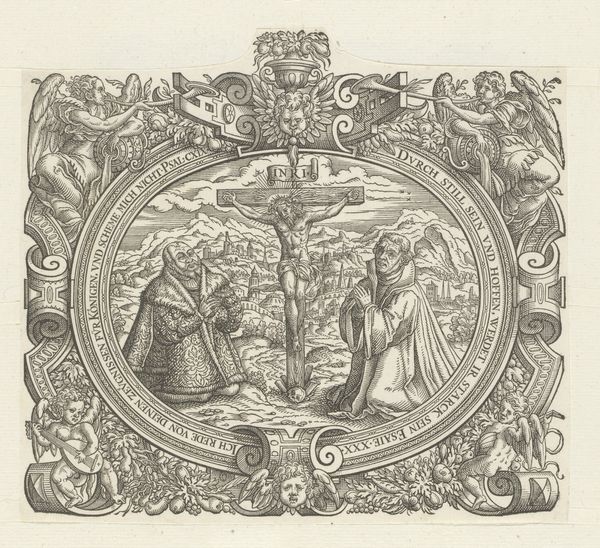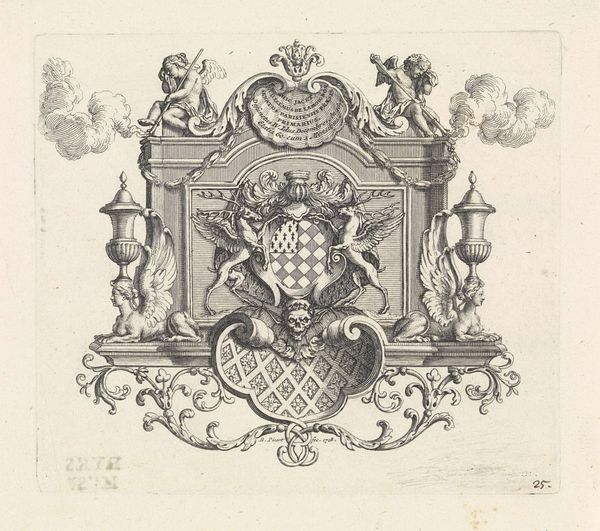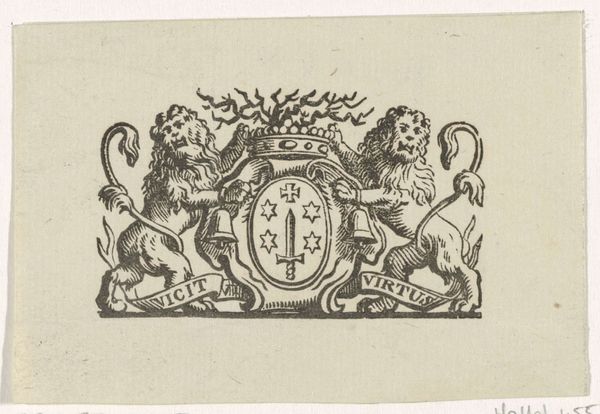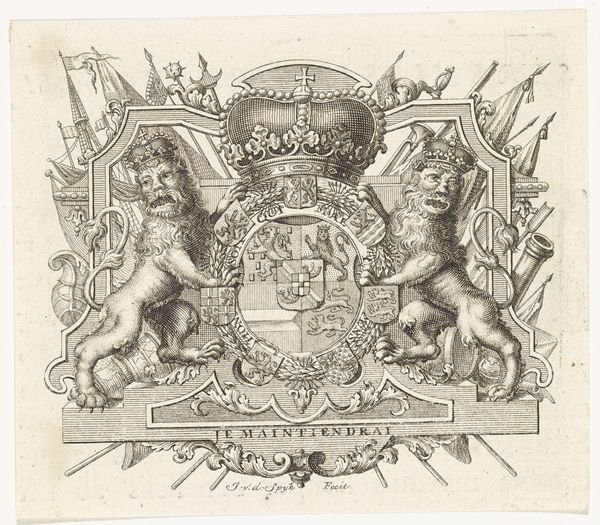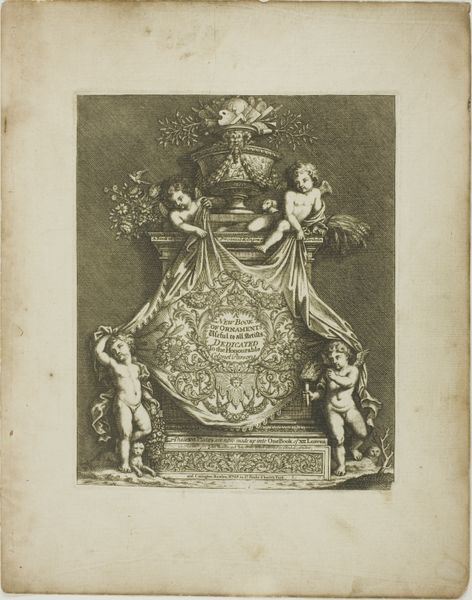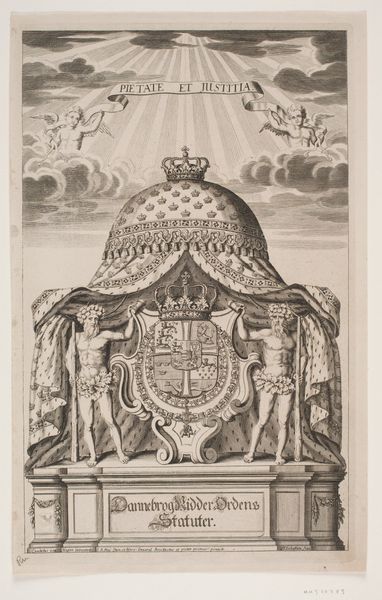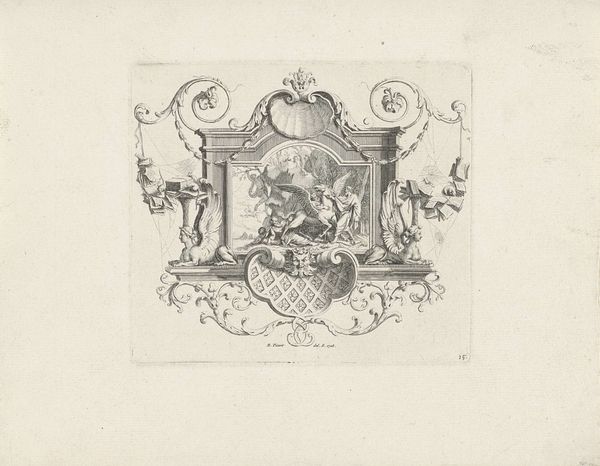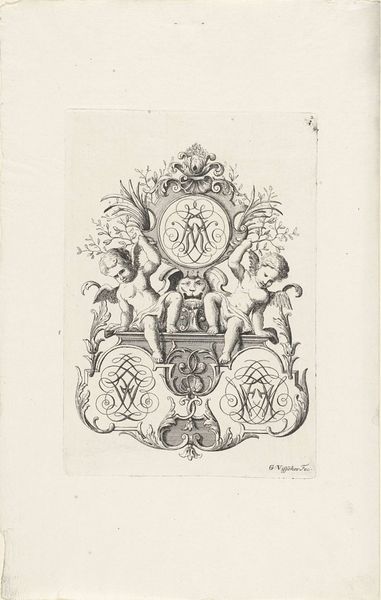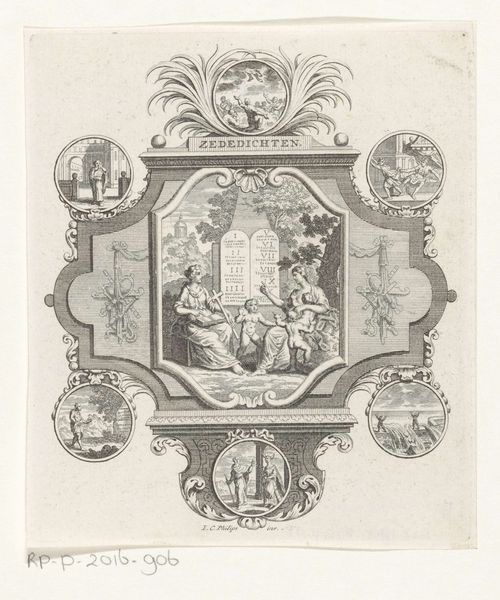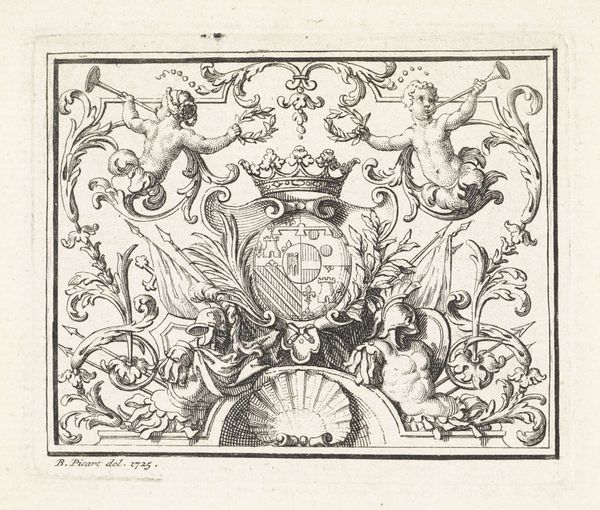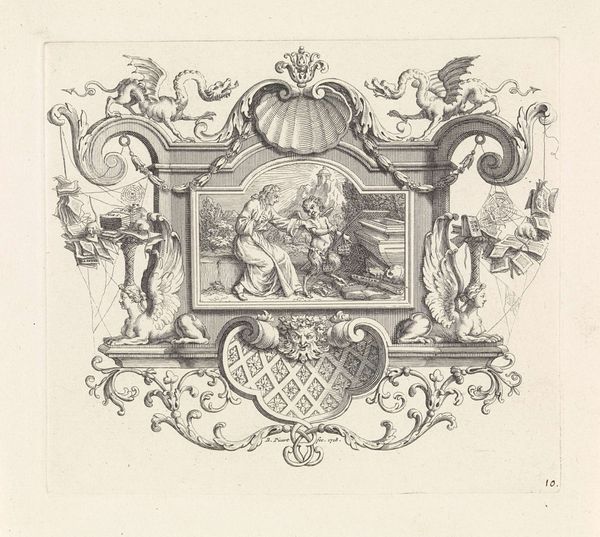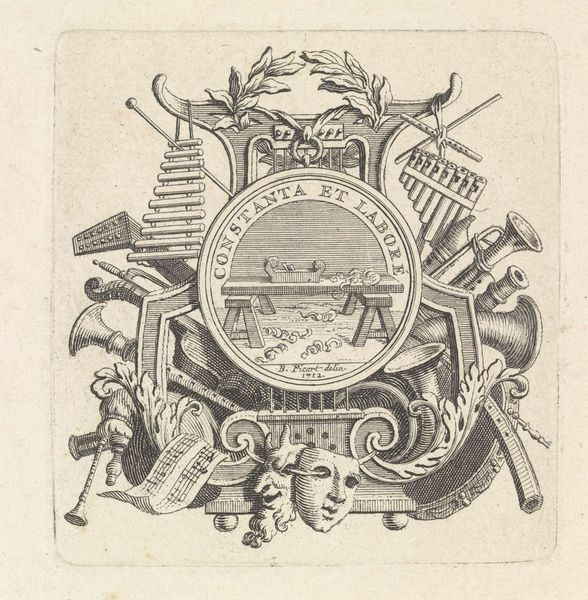
print, etching, engraving
# print
#
etching
#
geometric
#
engraving
Dimensions: 79 mm (height) x 81 mm (width) (bladmaal)
Curator: This is "Dansk rigsvåben," the Danish coat of arms, an engraving and etching by Oluf Olufsen Bagge, made sometime between 1780 and 1836. Editor: Immediately, I see layers of symbolism and power carefully constructed with meticulous detail. It looks like something straight out of a history book! Curator: Indeed. Focusing on the print itself, look at the fineness of the engraved lines. Bagge clearly had mastery over these printmaking techniques. The texture he coaxes from the metal plate mimics fabric and gives volume to the figures supporting the central crest. Editor: And those figures! Flanking the central heraldry, their poses speak to a very particular aesthetic of strength, but one can also question that strength when juxtaposed with their submissive function holding the curtain or mantle. This piece subtly comments on the construction of masculinity within regimes of power. Who are these men? Where do they come from? Curator: They are allegorical figures, representing the support upon which royal power rests. Think about what Bagge, as an artisan, put into this print. Labor and skill are etched into every detail. It really emphasizes the relationship between the production and the representation of authority. Editor: Absolutely, and by emphasizing craftsmanship, this elevates printmaking beyond mere reproduction; it makes the medium an active participant in reinforcing structures. It demands we interrogate who is depicted here and, moreover, for whom was this piece produced and how was it intended to be viewed? Curator: A noble question. Its scale suggests it might have been made as part of a book or some sort of official documentation. Perhaps even distributed as a form of political propaganda to cement perceptions of legitimacy and order. Editor: Context, context, context. It is too easy to be swept up in aesthetic presentation and not remember that it reinforces inequality through carefully composed symbolism. It serves as a reminder of the many forces always working together to reify an outdated hierarchy! Curator: It certainly makes one appreciate the incredible skills required to make this print. A testament to artisanship as a historical profession that demands recognition for their technical abilities in image making. Editor: A profession nonetheless at the service of power, prompting continuous interrogations of gender, identity, and social justice embedded within its production.
Comments
No comments
Be the first to comment and join the conversation on the ultimate creative platform.
